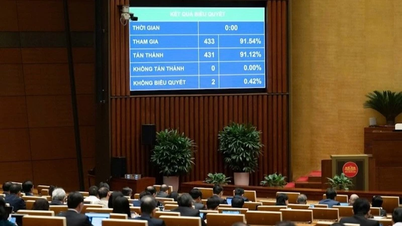Chest deformities, also known as funnel chest or pectus excavatum, are more common in men than women. Without early surgery, the condition can cause symptoms affecting cardiopulmonary function, as well as psychological distress for both parents and children.
Congenital chest deformities can cause compression of the heart and lungs.
Congenital chest deformity is a congenital chest deformity caused by abnormal development of some ribs and the sternum, resulting in a sunken chest. This defect can be detected at birth or during puberty, but most cases are detected at birth.
This is a condition where the sternum and ribs develop abnormally inward, causing pectus excavatum (sunken chest). The condition can compress the heart and lungs, restrict physical activity, lead to weight loss, and affect the child's psychological development. It may be associated with deformities or scoliosis, usually at a mild level.
Congenital chest deformities form when there is excessive or unbalanced growth of the lower costal cartilages, pushing the sternum backward and creating a sudden and deep curvature of the sternum just before its junction with the xiphoid process. These chest deformities are usually detected shortly after birth or during puberty. In most cases, they are detected immediately after birth.
The disease progresses over time, becoming most apparent during puberty when bone growth is at its peak. It has a familial nature; siblings or even fathers and sons may both be affected.

Congenital chest deformities are caused by abnormal development of the sternum and costal cartilages, resulting in a deep, sunken chest cavity.
How to detect congenital chest deformities
Most mild to moderate cases of pulmonary embolism will not cause symptoms. In more severe cases, common symptoms include chest pain, persistent fatigue, shortness of breath, and rapid heartbeat.
When children are overly active, it can lead to limited physical activity, causing them to become more tired and experience shortness of breath than their peers.
Being thin and malnourished, combined with a sunken chest, results in poor aesthetic appearance.
Treatment of congenital chest deformities
The primary treatment for congenital chest deformities currently is surgery. Severe cases of chest deformities affecting cardiopulmonary function or those associated with congenital heart defects should be treated early. The optimal age for treatment is usually between 7 and 15 years old; older patients can still undergo surgery, but it is more challenging. Surgery performed too early, before the bones are fully developed, can be very painful if performed too late, when the skeletal structure has already formed.
Surgical indications include one of the following factors:
- Symptoms of cardiopulmonary embolism include: shortness of breath, chest pain, and limited physical activity.
- Aesthetic factor: While a sunken chest may not cause symptoms, it is aesthetically unappealing.
- Psychological factors: Children with low self-esteem are hesitant to interact with others.
- An index used to assess the severity of chest deformity.
For children with mild to moderate chest deformities who are not candidates for surgery, doctors will prescribe physiotherapy. Exercises can help improve chest shape and reduce discomfort under the guidance of a physiotherapist.
Regular physical activity can also be helpful for mild cases of chest deformities. Note that children should choose age-appropriate sports and avoid overexertion.
In summary : Congenital pectus excavatum is caused by abnormal development of the sternum and costal cartilages, resulting in a deep depression in the chest. If left untreated, pectus excavatum can cause various problems depending on its severity, including pain due to bone deformation, muscle strain, or compression of the heart and lungs, affecting physical activity. Therefore, early detection and timely treatment are crucial, and parents should seek medical attention promptly if they suspect any of these conditions.
Dr. Tran Anh Tuan
Source: https://giadinh.suckhoedoisong.vn/can-phat-hien-som-di-dang-long-nguc-bam-sinh-172241121113519428.htm












































































































Comment (0)